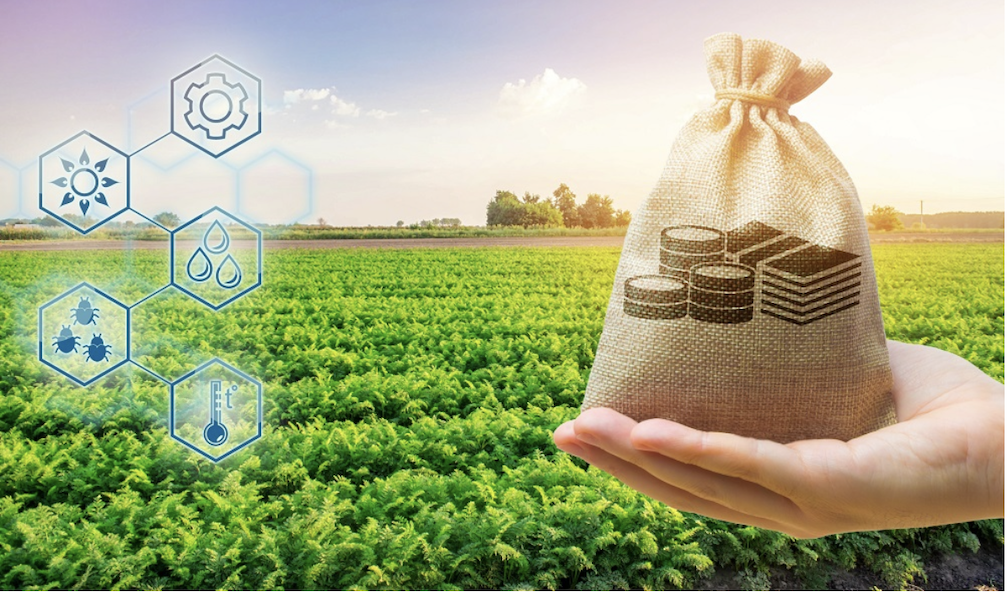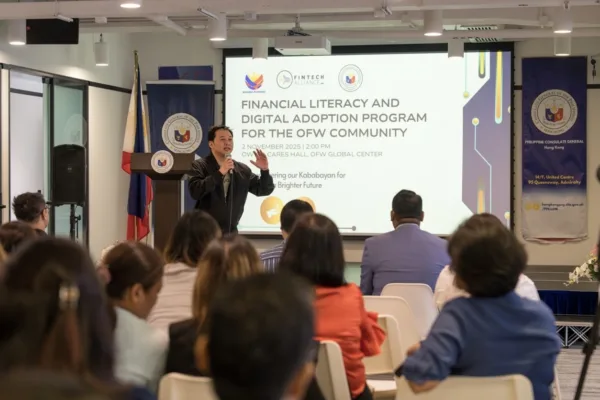by Edielyn Mangol, Reporter
Behind every meal shared by Filipino families are the hardworking hands of millions of farmers, who despite their vital role in feeding the nation and sustaining rural economies, have long been excluded from formal financial systems – a critical gap that e-wallets and other digital innovations like agri-fintech are now starting to bridge.
Traditional barriers such as lack of collateral, limited banking infrastructure in remote areas, and insufficient financial literacy have historically kept many unbanked and underserved.
Agriculture remains a cornerstone of the Philippine economy, supporting the livelihoods of millions. Yet challenges like limited access to capital, poor insurance coverage, and weak market linkages continue to hinder farmers from maximizing their potential. Many are left operating on thin margins, vulnerable to risks and reliant on informal lending that often traps them in cycles of debt.
Agri-fintech solutions are beginning to reshape this reality. Mobile apps and digital platforms like e-wallets now offer farmers the tools to access loans, make the necessary payments, and secure insurance, right from their devices. This wave of innovation is not only addressing financial gaps in rural communities — it’s unlocking new opportunities for Filipino farmers to grow, invest, and build resilience in a fast-changing economy.
Why agri‑fintech is urgent
Northern Luzon’s rice terraces, Mindanao’s coconut groves, and coastal fishing communities across the archipelago power the country’s food security. But the Bangko Sentral ng Pilipinas (BSP) estimates a ₱360 billion credit gap in agriculture, leaving smallholders unbanked and vulnerable. That financial exclusion is exacerbated by climate shocks — last year alone, disasters caused ₱57.8 billion in crop losses.
Agri‑fintech is tackling these challenges head-on by enabling:
- Tailored lending based on supply orders, not credit history.
- Digital payouts through e-wallets that avoid travel costs.
- Index-based insurance that pays out when weather systems go extreme.
With more than 10 million Filipinos relying on agriculture for their livelihood, the need for accessible, tech-driven financial solutions like e-wallets and other digital solutions has never been more urgent.
Agri-fintech offers a lifeline, not just through convenience, but through resilience. These e-wallets and similar other digital tools simplify access to financing, minimize risks, and reinforce agricultural value chains — enabling farmers to shift from merely getting by to building sustainable, thriving livelihoods, one harvest at a time.

Agri‑fintech in practice
Agri-fintech partnerships in the Philippines are moving beyond experimentation and into real-world impact. These pilot programs not only address farmers’ financial exclusion but also build resilient frameworks that combine technology, trust, and targeted assistance.
The following examples highlight how e-wallet platforms and agri-fintech models are being tested and scaled to support the country’s agricultural backbone:
1. GCash x Mayani: Fair Lending in Batangas — In Lian, Batangas, Fuse, the lending arm of e-wallet firm GCash, partnered with agri-tech startup Mayani to offer production loans tailored to specific crops and supply contracts.
Photo shows (from L to R:) Baby Aquino, VP and Strategy Head of Fuse Lending; JT Solis, Co-Founder and CEO of Mayani, Inc.; Tony Isidro, President and CEO of Fuse Lending; and Jeff Barreiro, Co-Founder and Executive Chairman of Mayani, Inc.
Mayani CEO JT Solis explains: “Financial rails for the agri‑fisheries sector are best built on top of existing market rails… this partnership accelerates our agri‑fintech aspiration… making our farmers… bankable, credit‑worthy, and financially empowered”
With over 144,000 farmers and fisherfolk onboard and ₱100 billion in total lending via Fuse since 2016, this model shows strong promise.
2. PCIC x GCash: Instant indemnity, real impact
In January 2025, the Crop Insurance Corp. (PCIC) inked a partnership with GCash to deposit indemnity payouts directly into farmers’ e‑wallets.
Farmers across Pampanga and Bulacan validated this shift: “Maraming dahilan kung bakit ako na-convince. Nakita ko ‘yung mga merong GCash at madali ang kanilang transaksyon sa lahat ng bagay: sa pagbabayad, sa pangongolekta, at iba-iba pa, (There are many reasons why I was convinced. I saw how those with e-wallet apps like GCash were able to make their transactions easy in a lot of ways: to make payments, receive payments, and so much more),” shared Geronimo Sagum, a farmer who participated in the PCIC x GCash Digital Financial Literacy Caravan.
The initiative even brought a “Digital Financial Literacy Caravan,” teaching rural communities how to use GCash for savings, bills, and microloans.
Satellite insurance and agro‑advisory: A climate‑smart step
On June 9, 2025, PCIC, IRRI, DA‑PhilRice, PAGASA, and CIAT launched a pilot combining satellite-based insurance with weather-informed advisories for rice farmers. By linking weather data with payouts and recommendations, this innovation helps farmers prepare better and recover faster from disasters.
How e-wallets and other tools work with the agri‑fintech ecosystem
Agri-fintech combines tech-driven finance with farming needs, offering tailored tools that address rural realities. Here’s how key components work together to support farmers:
- Smart lending – Platforms like Mayani analyze supply chains to underwrite loans, giving farmers credit that traditional banks would deny.
- Digital wallets – With 81 million active GCash users distributing loans, subsidies, or indemnities is immediate and transparent.
- Index insurance – Crop tools trigger payouts based on weather thresholds—removing delays, fraud, and subjectivity common in traditional methods .
- Education and tools – Literacy caravans and app-based advisory systems help farmers manage money, plan crops, and understand risk.
These elements come together to build a connected and resilient ecosystem. Harnessing big data, real-time monitoring, and digital transactions, agri-fintech reduces barriers confronting smallholders. Farmers experience faster access to financial support, improved risk protection, and actionable information, leading them toward smarter decisions and more sustainable livelihoods.
Scaling for inclusion
To expand agri‑fintech impact, stakeholders must collaborate:
- Government and regulator: BSP, DA, DAR and PCIC could set standards and incentivize agri-fintech through subsidies or co-financing.
- Private sector partnerships: Combining startups like Mayani with giants like GCash or Fuse builds scalable models.
- Infrastructure investment: Lawmakers and telcos should prioritize broadband in farming communities — ensuring “Konektadong Pinas.”
- Farmer-centric design: Tailoring products to local languages, crops, and risk profiles enhances adoption and long-term use.
Agri-fintech is turning rural financial exclusion into digital opportunity, empowering Filipino farmers with credit access, climate protection, and long-term economic growth. Yet building trust, regulatory clarity, and rural infrastructure remains essential for nationwide scale.
As these pilots grow into nationwide platforms, they’re planting seeds of digital wealth, and a more resilient agricultural future — for the millions who feed the nation.








